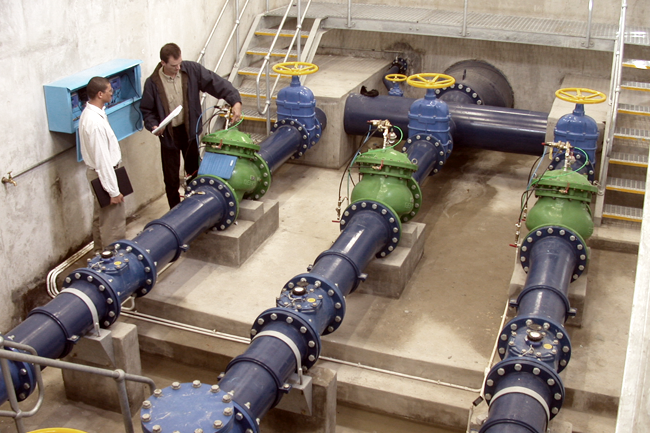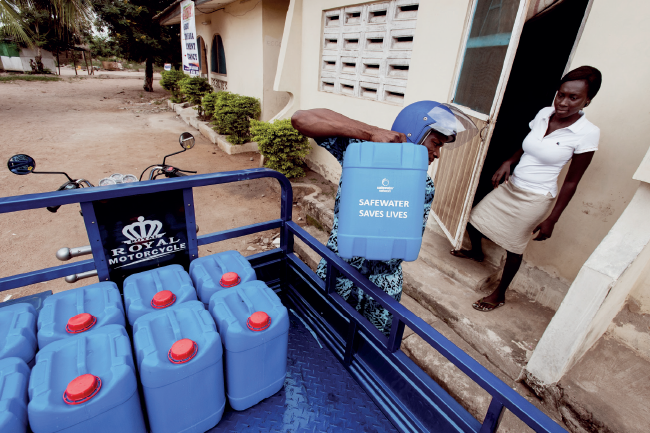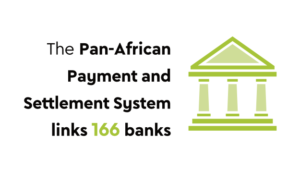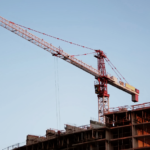Access to water is a human right of everyone in the world. However, ensuring this access to water is the difficult task of utilities and other network providers, who grapple daily with a myriad of complex infrastructure and business challenges.
Increasingly, their work is being eased by emerging technologies, ranging from pipe-monitoring equipment to mobile pre-payment solutions. These smart technologies have the potential to not only improve management of resources, reduce waste and boost finances for water providers, but also to increase affordable access to water across Africa.
Research by German development agency the Deutsche Gesellschaft für Internationale Zusammenarbeit (GIZ) estimates that in developing and emerging countries, between 40% and 80% of water fed into drinking water supply networks is lost due to pipe leakages, resulting in substantial financial consequences for water providers, as well as end users.
Citing the results of leakage discharge tests, water loss from a single hole with a diameter of 6 mm in a distribution pipe (at a pressure head of 60m) can amount to 1.8 m³ per hour, which adds up to 1 300 m³ per month, ‘enough to fill an Olympic-size swimming pool in less than two months,’ according to the GIZ.
The reality is that many water-distribution networks have numerous holes that are much larger and, as such, the scale of water loss is of an even greater magnitude.
However, while these statistics reflect a fairly sizeable problem, the GIZ says it is compounded by common misguided responses on the part of water utilities.
Often the reaction to water losses is to boost spending on ways of increasing water production. However, the agency argues that a more appropriate response would be to invest the same funds in the maintenance or improvement of existing infrastructure. Utilities should focus on implementing solutions to water loss instead of scaling up production to counter losses.
‘Recovering some of the lost water through water-loss reduction measures often represents an economic alternative to exploiting new resources through cost-intensive measures, such as new dams, deep wells or seawater desalination,’ says the GIZ.

Technically speaking, the GIZ estimates that it would be possible to reduce water losses by around 5%. But in order to do so, a range of political, financial and technical hurdles must be addressed – and that’s before considering the naturally low water sources available in certain regions, including in some sub-Saharan African countries.
In 2003, a task force set up by the International Water Association identified four key points that should be addressed to ensure better water provision – pressure management; active leak detection; speed and quality of repairs; and infrastructure management.
Smart technologies can be implemented by utilities across all of these areas to improve water networks. Smart installations that monitor and adjust water pressure have already been implemented in water networks globally – with impressive results. And while there is often a sizeable cost associated with installing the equipment, smart solutions typically offer a return on investment in a relatively short amount of time.
For example, a study of four large pressure-management installations in South Africa’s Western Cape province (Khayelitsha, Mfuleni, Gugulethu and Mitchells Plain) found the installation costs came to US$1.7 billion in total but resulted in 13.4 million m³ of water saved per year. This amounts to an annual saving of US$5 billion.
The impact of smart technology on water-network management is not confined to equipment. It can also support water utilities in detecting, locating and repairing leaks by providing channels to gather and process data relating to the network. Data-management systems are thus also key to improving water networks. ‘Good decisions and careful planning always require sound data as their basis,’ says the GIZ. The agency adds that departments within utilities should ensure adequate data sharing to create a combined water loss-reduction strategy.
‘Data makes a reactive water system proactive by providing near real-time data and two-way communications,’ according to Darren Oxlee, chief technical officer at Utility Systems, a South African supplier of water management devices. ‘This fundamentally changes the way in which water is managed.
‘Such systems provide the information that allows utilities to reduce wastage through better detection and analysis, and for them to plan effectively using extensive data analytics and flow modelling. It is also possible to remotely control valve-enabled water meters, shutting off supply as required.’
In addition to utility-based water management scenarios, smart solutions are also being used in more basic water-provision settings to improve water access on a consumer level.
Across the continent, people in rural areas often rely on metered water solutions to access water. The Safe Water Network (SWN) is currently piloting cash- and mobile money-based digital meters in households in four rural communities in Ghana. Households are equipped with a smart meter for which consumers can buy ‘tokens’ with cash or mobile money. After entering the token’s code via the smart meter’s keypad, water is dispensed.
This digital-based model has benefits for both consumers and providers of water, according to the SWN. Independent control offers consumers more convenience, while from a provider perspective, the upfront payment model eliminates accounts falling into arrears and reduces billing-related costs.

‘Smart meters are a promising technology to reduce operating costs for managing household water supply, while enabling increased safe water consumption, which results in improved health and strengthened financial viability of the water system,’ states the SWN.
An important element of the smart meters being trialled by the SWN is mobile compatibility, allowing for mobile money payments and tokens being delivered via SMS. This offers consumers more versatility, while providers have a less active role in the water provision cycle, from payment collection to actual water distribution.
‘Mobile-enabled smart meters will facilitate prepayment for water at volumes determined by the consumer. Prepayments will enable full collection of all costs owed for water consumption, as opposed to sustaining a possible 30% loss with conventional meters. Additionally, we expect smart meters will reduce monthly operating costs by 5% compared to conventional household connections,’ says the SWN.
In these more rural settings, there are various possible tiers of water provision. On a community level, automated water stations can be introduced whereby people can pay to access a set amount of water. The capital costs of these stations are around US$30 per person to receive a sustainable water supply. This is substantially cheaper than utility water and it offers a flexible solution to water provision in challenging settings.
Community water stations serve as a starting point to expanding services to smaller localities and households. As such, basic digital water stations could act as a stepping stone to increased household-based water access.
Across models of rural water provision outside the realm of utility-provided water, digital tools – from mobile payment options to smart-metered taps – are facilitating improved provision. According to Lis Bernhardt, programme officer at the UN’s Freshwater Ecosystem Unit, smart tech solutions have an important role to play in the provision of water globally, and can present a range of indirect benefits particularly relevant in Africa.
Smart tech can help water providers by detecting leaks in pipes (pinpointing where losses are taking place and what repairs need to be made); through pressure-management tools, which offer a number of benefits); and promoting conservation, says Bernhardt.
However, beyond these network-based benefits, she adds, smart tech can improve overall access to water in Africa.
‘Besides these positive effects, pressure management may generate additional indirect benefits of direct relevance to Africa, which has the lowest rates of direct piped drinking water to households in the world.’
This includes ‘an increased number of households with access to public water supply; an increased duration of water supply [hours/day]; equal and fair water supply distribution considering social constraints; and reduced production costs and energy consumption.’



















